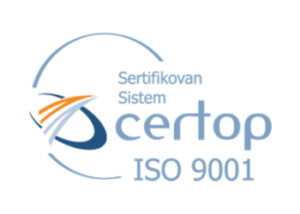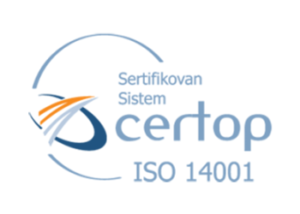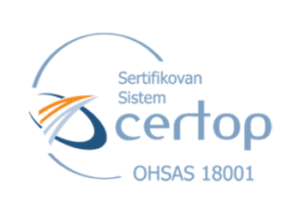Certificates and permissions

Our certificates
Eko Unija SN d.o.o. is certified according to the latest ISO business standards.

ISO 9001: 2008 is the framework for implementing a quality management system.
ISO 9001: 2008 is an internationally recognized standard for quality management system (QMS) published by the International Organization for Standardization (ISO) in 1987, and then revised in 1994, 2000 and in November 2008. The ISO 9001: 2008 standard is the framework for the implementation of the system quality management and provides an opportunity for organizational performance in terms of product and service quality. The standard enables a series of principles that provide a logical approach to managing business activities to consistently achieve customer satisfaction. It specifies the requirements for quality management, where the organization should assess and demonstrate its ability to provide products or services that meet the needs of users and applicable legislation, and thus increase customer satisfaction.
The ISO 9001: 2008 standard is intended for use in any organization that wants to improve the way it is managed and managed, regardless of its size, sector and category of products or services.
Basics of ISO 9001: 2008 (QMS):
- Quality policy
- Document management
- Records management
- Internal check
- Discrepancy management
- Corrective measures
- Preventive measured
- Continuous improvement
Uses ISO 9001: 2008:
- Improves financial operations
- Increases reputation
- Increases the level of customer satisfaction
- Improves operational process management
- Provides a competitive advantage
- Compliance with legislation
- Ability to compete globally in quality and price
- Access to new markets
- Improving relationships with customers and suppliers
- Improved consumer focus and orientation process
- Continuous improvement of quality management

ISO 14001: 2004 is a standard that enables the reduction of negative environmental impacts and the promotion of environmental business practices.
The ISO 14001: 2004 standard is an environmental management framework published by the International Organization for Standardization (ISO) in 1996 and revised in November 2004.
The standard is based on the principle of continuous improvement of the state of life organization. The standard uses the Plan-Do-Check-Act concept, which is an improvement. It consists of a set of requirements that the company must deal with and implement in its activities. The main purpose is to constantly improve the protection of the environment. ISO 14001: 2004 can be applied to any company that wants to establish, implement, maintain and improve the environment and management system in accordance with its statement on Environmental Policy.
Basics of ISO 14001: 2004 (EMS):
- Environmental policy
- Identification of significant environmental aspects and impacts
- Development of goals and programs
- Implementation plan to meet goals and programs
- Identifying training requirements
- Management review
Uses ISO 14001:2004:
- Reduction of responsibilities and risks
- Facilitating business processes
- Minimize waste and energy
- Lower distribution costs
- Improving business image
- Gaining international recognition
- Improving marketing potential

OHSAS 18001: 2007 is an internationally recognized standard for health and safety (OHS) at work.
The standard provides a framework for organizations, regardless of their complexity and size, to manage their security holistically. OHSAS 18001 is designed to enable organizations to demonstrate their commitment to providing a safe and efficient work environment by identifying risks and improving access to active management of these activities.
The goal of OHSAS 18001 is to continuously reduce the risk of occupational hazards in the workplace, which in turn improves the company’s productivity.
Basics of OHSAS 18001: 2007:
- Environmental policy
- Workplace risk assessment
- Development of goals and programs
- Implementation plan to meet goals and programs
- Identifying training requirements
- Management review
Uses OHSAS 18001:2007:
- Improves efficiency and reduces the number of accidents at work
- Demonstrates a commitment to protecting employees, property and plant
- Shows respect for the law
- Improves reputation
- Improved relationship with partners based on safety and protection of staff, customers and suppliers
- Compliance with legal regulations
- Increased credibility of the company
- Cost savings through emergency preparedness
- Improved risk management system
Permissions
We have all the necessary waste management permits:
- Permission for collection and transport of non-hazardous waste on the territory of the Republic of Serbia (number: 19-00-00189 / 2017-16, issued by the Ministry of Environment, Mining and Spatial Planning of the Republic of Serbia)
- Permission for storage of non-hazardous waste and mechanical treatment of metal waste (number: 501-86 / 2020-III-01, issued by the Municipality of Stara Pazova)
